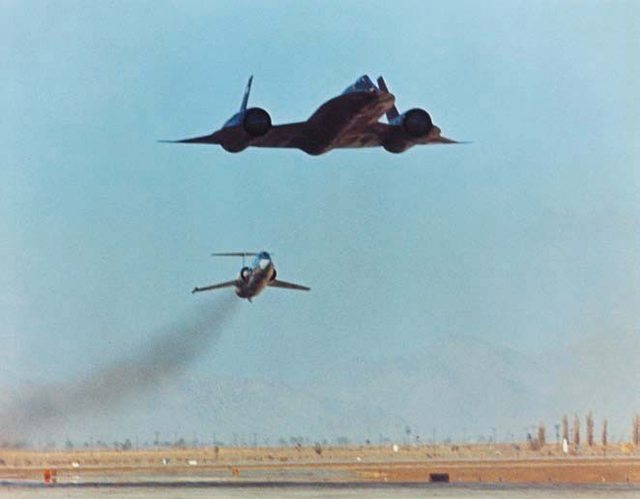Some awesome footage of the SR-71 at the RIAT in England, including a low pass.
Fifty years later the SR71 still has to be the coolest-looking plane ever built…
1960’s technology… Makes you wonder what they are designing now.
The SR-71 Blackbird, an iconic aircraft of the Cold War era, continues to captivate the aviation world with its legendary speed and unparalleled elegance. Developed by Lockheed Martin’s Skunk Works division, the SR-71 remains a symbol of aerospace engineering prowess.
Speed Beyond Compare:
The SR-71 holds the world record for the fastest air-breathing, manned aircraft. With a top speed of Mach 3.2 (around 2,200 miles per hour), it could traverse the continental United States in less than an hour. This exceptional speed made it nearly invulnerable to enemy interceptors and surface-to-air missiles.

Mach 3.2 at 85,000 Feet:
Cruising at altitudes above 85,000 feet, the SR-71 operated in the rarefied stratosphere. At this height, its two powerful Pratt & Whitney J58 turbojet engines could burn special JP-7 fuel, which, due to its unique properties, prevented the aircraft’s skin from melting at such high speeds.
Stealthy Design:
The Blackbird’s sleek, streamlined design, combined with its black radar-absorbing paint, gave it a distinct and imposing appearance. Its shape helped reduce radar cross-section and made it extremely challenging for adversaries to detect and target.
Spy Plane Extraordinaire:
Built for reconnaissance, the SR-71 gathered critical intelligence during its operational years. Its cameras and sensors were state-of-the-art, providing invaluable information to U.S. military and intelligence agencies.

Retirement and Legacy:
The SR-71 was retired in the late 1990s, but its legacy lives on. No aircraft has matched its speed and altitude capabilities. Its importance in aviation history cannot be overstated.

Conclusion:
The SR-71 Blackbird remains a marvel of aviation engineering, a testament to what is possible when innovation and ingenuity are combined. Its speed and elegance continue to inspire awe among aviation professionals and enthusiasts alike, cementing its place as an enduring icon in the world of flight.








